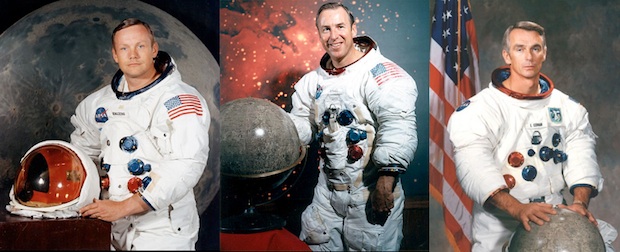When NASA launched the Lunar Reconnaissance Orbiter in 2009, of course scientists were hoping the spacecraft would add to the knowledge we have of our sole natural satellite -- its geography, topography, weather, and so on. But one question many were hoping the LRO would answer had little to do with the moon's environment: What had become of the Apollo sites, left behind by the humans who visited the surface between 1969 and 1972?
For forty-odd years, the flags have been exposed to the full fury of the Moon's environment -- alternating 14 days of searing sunlight and 100° C heat with 14 days of numbing-cold -150° C darkness. But even more damaging is the intense ultraviolet (UV) radiation from the pure unfiltered sunlight on the cloth (modal) from which the Apollo flags were made. Even on Earth, the colors of a cloth flag flown in bright sunlight for many years will eventually fade and need to be replaced. So it is likely that these symbols of American achievement have been rendered blank, bleached white by the UV radiation of unfiltered sunlight on the lunar surface. Some of them may even have begun to physically disintegrate under the intense flux.
From the LROC images it is now certain that the American flags are still standing and casting shadows at all of the sites, except Apollo 11. Astronaut Buzz Aldrin reported that the flag was blown over by the exhaust from the ascent engine during liftoff of Apollo 11, and it looks like he was correct!
Pretty cool, if you ask me. And what's even cooler - and something that I keep forgetting - is that the entire span of the Apollo moon missions that actually saw man walking on the moon was only three years.
See the LROC website here.









